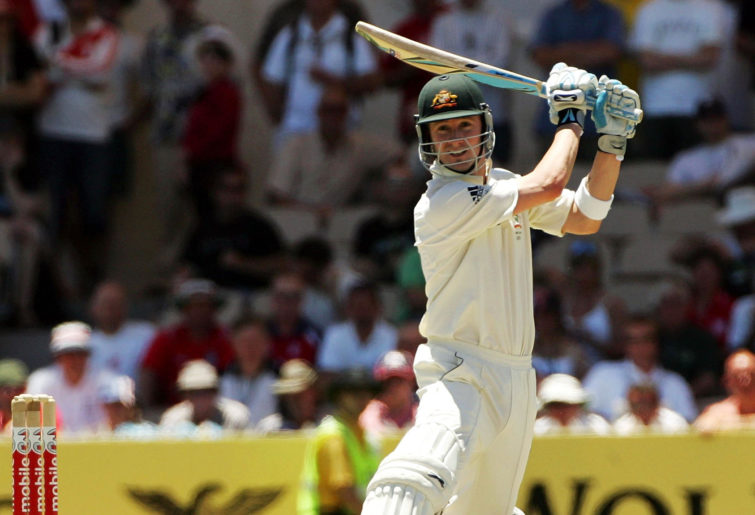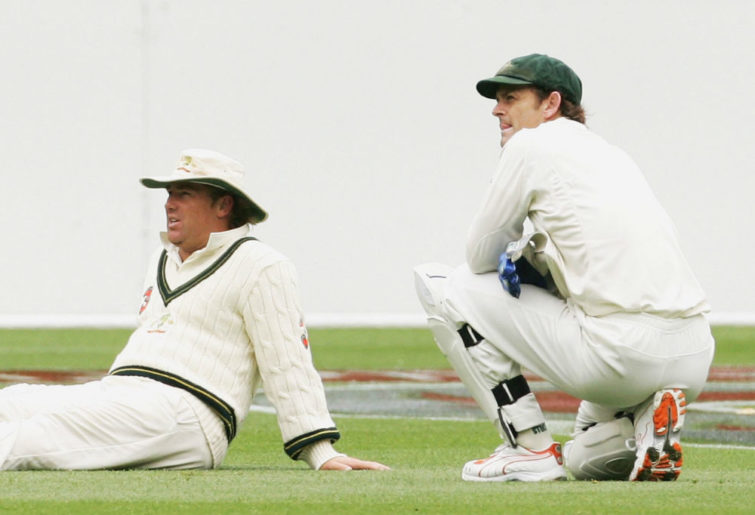World Cup chances up in the air but Smith makes Major call on T20 future, Green dumped despite huge IPL deal
Test great Steve Smith is to play for Washington Freedom in the second season of Major League Cricket as the Australian influence in the…
Opinion
With the 15-year anniversary of the 2005 Ashes series rapidly approaching, there’s no better time to revisit the greatest series I have ever witnessed.
This contest really made me fall in love with the sport and I spent most of my junior years trying to emulate the superstars who played.
I have the DVD box set beside me ready to be played for approximately the 37th time. Eight hours and 33 minutes of extraordinary cricketing drama awaits, narrated by legends including Mark Nicholas and Richie Benaud.
Let’s crack on!
5. Steve Harmison’s slower ball to Michael Clarke at Edgbaston
England had been well beaten in the first Test at Lord’s and the press had already begun sharpening their knives.
However, the England team responded well and played some solid cricket during the first three days at Edgbaston to put themselves in with a shout of levelling the series on the fourth day.
As the third day was drawing to a close, Australia were hanging on at 7-175. Michael Clarke, the best of the remaining batsmen, was on 30 and playing well despite facing some ferocious fast bowling from the likes of Steve Harmison and Andrew Flintoff.
Clarke was a vital wicket and had he survived the final over, Australia would have had Clarke, Shane Warne, Brett Lee and Michael Kasprowicz to score the remaining 107 runs the following day. In this context, an Australia victory would have been more than likely.
As it happened, right at the death Harmison produced one of the great deliveries, a slower yorker that completely deceived Clarke and bowled him all ends up.
This was the pivotal moment of the entire summer.
The next day, England went on to win by two runs in an extraordinary finale that transformed the game into one of the greatest Test matches of all time.
The result gave England the confidence to take on the Australian superstars over the final three Tests.

Michael Clarke (Photo by Hamish Blair/Getty Images)
4. Flintoff versus Gilchrist
This is less a single moment and more a battle that lasted the whole summer.
When Australia touched down in the Old Dart in June, they brought with them the most destructive batsman in world cricket, Adam Gilchrist.
An attacking left-handed batsman and record-breaking wicketkeeper, Gilchrist is one of the most exhilarating cricketers of the past 30 years and was a key cog in the Australian war machine that had dominated Test cricket for over a decade.
Gilly came into the 2005 series with a Test batting average of over 50, and an average above 60 in Ashes series. He was a player that England had to contain if they were to have a chance of regaining the urn and it became clear early on they had a plan to stop him playing his natural game.
Field placements set for him were aggressive but intelligent and England possessed bowlers with both the pace and accuracy to carry them out effectively. ‘Freddie’ Flintoff, in particular, had the wood on Gilchrist, dismissing him four times throughout the series.
There was an edginess to Gilchrist at the crease. He seldom played in the aggressive manner that had defined his career and failed to register a score over 50, finishing the series with an average of just 22.
Even his wicketkeeping suffered as a result, with a number of dropped catches and missed stumpings a sign of the pressure he was put under by Michael Vaughan’s team.
Gilchrist went on to describe the 2005 series as “the worst time of my cricketing life”.

Shane Warne and Adam Gilchrist look on after a missed catch (Photo by Hamish Blair/Getty Images)
3. The emergence of Kevin Pietersen
While there was much debate going into the series as to who should occupy the final spot in England’s middle order, it was a surprise the selectors picked Kevin Pietersen over Graham Thorpe.
Thorpe had played a key role in helping England reach second place in the Test rankings over the previous two years, while Pietersen was the man with the blonde mohawk, a flamboyant strokemaker in one-day cricket who had never played a Test – let alone an Ashes series.
By gambling, England sent themselves down a path that would lead to much success in the years to come.
Pietersen started well, reaching half centuries in his first three innings, however his form faltered in the six innings that followed, with scores of 20, 21, 0, 45, 23 and 14.
His final knock of the series came on the last day of the final Test at the Oval.
England were in a sticky situation; Glenn McGrath havd rediscovered his form from the start of the series and had just dismissed captain Michael Vaughan and Ian Bell in consecutive deliveries to leave the hosts 3-67. The lead was just 73 runs and suddenly the Australians had a sniff of spoiling the party.
Pietersen arrived at the crease and somehow managed to fend off a snorter of a delivery from McGrath to avoid the hat trick and he was fortunate to be dropped at slip off the bowling of Shane Warne, before Warne himself failed to snaffle an absolute dolly after Pietersen edged a Brett Lee delivery.
Three strikes and Pietersen had survived them all.
Now the man from the Rainbow Nation attacked in a fashion that few batsmen at the time could, bludgeoning 40 runs in just 15 deliveries after the lunch break. Lee, Warne and McGrath were dispatched to all corners of the ground. Pietersen didn’t play by the textbook, these shots were pure instinct and he soon brought up his maiden Test century with another boundary.
He went on to score 158, blasting the Australians out of the game and ensuring the little urn would be returning to English shores once more.
Pietersen finished as the highest run-scorer in the series and went on to be at the heart of most that was good – and not so good – about English cricket in the following years.
This was the innings he truly announced himself to the cricketing world.

Kevin Pietersen (AP Photo/Theron Kirkman, file)
2. The aftermath of Edgbaston
Cricket owes much of its appeal and enjoyment to the fact that it is generally played not only according to the laws, but also within the spirit of cricket.
Players of all abilities are encouraged to safeguard this spirit whenever they take to the field. Respect is central.
As the England team celebrated wildly after winning the Edgbaston Test by the barest of margins, it was profound to see Freddie Flintoff go straight over to console a devastated Brett Lee.
Lee had played a tremendously brave rearguard that had brought Australia within a flick off the pads of victory, and Flintoff knew this as well as anyone.
With Lee looking down at the floor, barely able to process what had just happened, Flintoff put an arm around his shoulder, shook his hand, and made promise of a cold beer together later on.
It became an iconic moment in Ashes history that united these two players through the spirit of the game.
1. Shane Warne and that ball
I can’t write a piece on this series without mentioning Shane Warne.
The magician leg-spinner had a ridiculous series, taking 40 wickets at an average of just 19.92. In fact, Warne’s 2005 – when he nailed 96 victims in 15 matches at an average of 22.02 – remains unsurpassed in Test cricket.
As England started to turn the tide in the series, you got the sense the Aussies were constantly looking to Warne for inspiration, and he rarely failed to deliver.
He almost spoiled the party for England at Trent Bridge, taking 4-31 in 14 overs in the second innings to leave the hosts reeling at 7-116. He also contributed with the bat, scoring a valuable 124 runs in the Old Trafford Test to help the Australians snatch a draw and keep the series alive.
My favourite Warne moment however, came in that Edgbaston Test. England had a healthy first innings and were looking to bat out the final few overs of Day 2. Warne had other ideas.
With just his second delivery, he bowled an absolute beauty to opener Andrew Strauss, a ball pitching way outside off stump before spinning back sharply past Strauss’ thrusting pad to hit middle and leg. It was an absurd delivery that made Strauss look like a village cricketer, and he trudged off in disbelief as the Australians mobbed their talisman.
People will say that Warne’s delivery to Mike Gatting back in 1993 – dubbed ‘The Ball of the Century’ – is his best. But this was the delivery that had me outside on the driveway trying to master the art of leg-spin so that I could be like Warne, one of the greats of the game.
The 2005 Ashes was one of the most momentous sporting events in the UK. A winning England team, a talisman in Andrew Flintoff, and full grounds for every match – it inspired a new generation of boys and girls to take up the game. There was talk of the rebirth of cricket as a national summer sport and that the momentum from this series would set English cricket on the right path again.
Sadly it wasn’t to be, not least because of the disappearance of the game from terrestrial TV. But this is not the place to lambast the ECB and broadcasters.
The glorious summer of 2005 remains a time of true pride and heroic performance and it will forever be in the memories of those fortunate to have witnessed it.
It was a series for which five top moments is nowhere near enough.